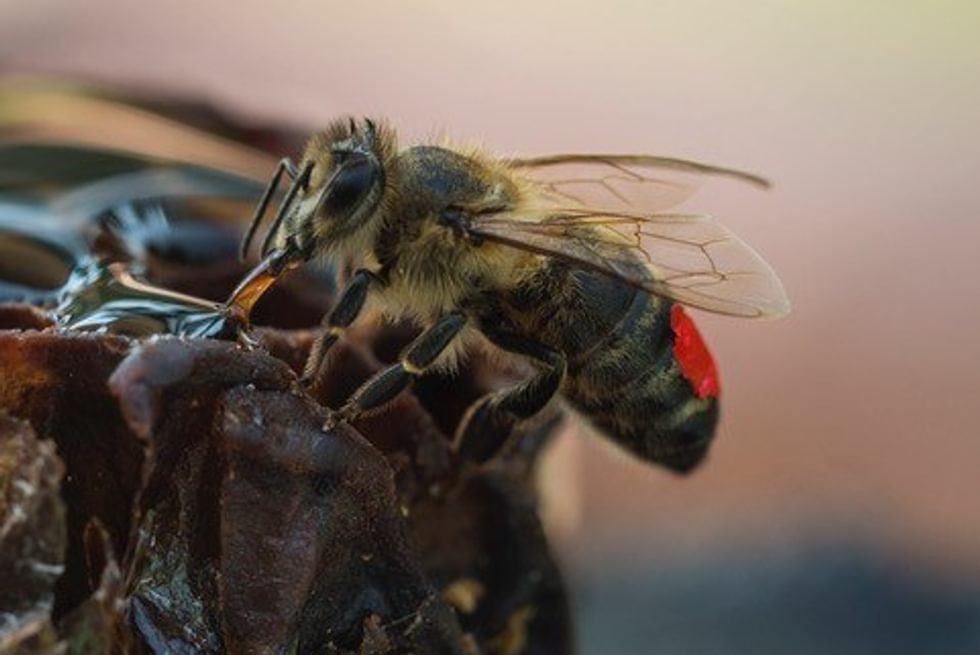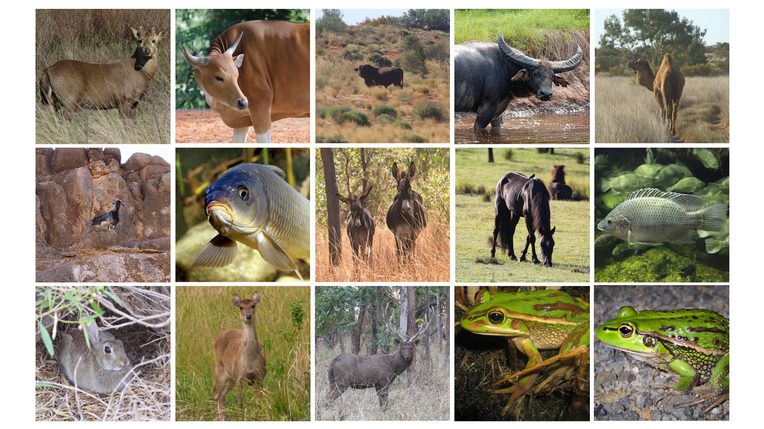Counting and Discounting Life in an Age of Extinction
From the Series: Multispecies Care in the Sixth Extinction
From the Series: Multispecies Care in the Sixth Extinction

The threat of species extinction unambiguously calls humans to care for the more-than-human. Yet, even as the realities of extinction arouse such care, some species are systematically excluded from measures used to index loss. Even more troubling, care for some species has come to serve as a seemingly unproblematic justification for the mass killing of others. This raises the ethical question: Who counts? By this, we intend not only to ask who is counted in such census measures, or has value, but also who is doing the counting, and by what right?
The International Union for the Conservation of Nature (IUCN) Red List is the most widely used repository of the conservation status of the world’s species. Its stated aim is to provide a “complete barometer of life” (IUCN 2020). Scientists, governments, and advocates have come to rely on the Red List to create knowledge and policy. However, the Red List (and similar regional conservation lists) excludes large swaths of the living world (Wallach et al. 2020).
Conservation data typically includes only those species categorized as “native.” Nativeness, a contested concept (Chew and Hamilton 2011), excludes populations and species whose ancestors were moved by humans (usually since Western colonization) into new locales and those who were domesticated.
In a recent study (Wallach et al. 2020), an interdisciplinary team asked what would be revealed if we dropped this filter from conservation datasets. Drawing on published literature on the distribution and conservation status of vertebrates that have been moved into, and from, Australia, we reintegrated previously excluded species into the IUCN Red List dataset to represent where they are actually found, rather than where it is thought they should be (e.g., by adding cane toads to Australia’s species list and expanding possums’ range to New Zealand). We discovered 134 species that have been made invisible in formal conservation data: 87 species introduced into Australia and 47 taken from Australia and introduced elsewhere.
Formal conservation accounts underestimate global ranges (e.g., nearly 90 percent of European rabbits’ range is outside the Iberian Peninsula, the only area they are considered “native”). Immigrations have surpassed extinctions in Australia by fifty-two species. Migrants are disproportionately threatened in their native ranges, but incorporating these populations into risk assessments would often reduce their species’ threat statuses (e.g., European rabbits would be delisted from the endangered category). Life looks radically different when all species are counted in conservation.

Two types of justification are generally offered for the current nativist definition of life. First, that excluded animals are harmful because they are not part of “native” ecosystems. Setting aside the ambiguity of what constitutes “harm,” this is an empirical claim that needs to be empirically assessed. A simple conflation by definitional fiat of “not native” with “destructive” is unjust (Sagoff 2005). The second justification is that the excluded animals are not as valuable, either because they are “out of place” and/or “not wild,” or for aesthetic, cultural, and political reasons. But these are not self-evident justifications; they are claims that need to be argued and evaluated.
Indeed, despite the deployment of decolonial logics to parse invasion and nativism, Indigenous peoples express a range of views on questions of animals’ belongingness and nativeness. While some Indigenous peoples support the eradication of “non-native” species (Ens, Fisher, and Costello 2015), others reject the dichotomous logic that settler-colonial societies persist in using, now for an apparently caring purpose (Rose 1995; Trigger 2008; Vaarzon‐Morel and Edwards 2012; Reo and Ogden 2018).
Making explicit the flimsiness of the apparently “natural” distinction between “native” and “invasive” is critical, because the data are not simply grounds for the care of those who fall on the valorized side of nature; they also drive violence toward those on the other side (Celermajer and Wallach 2019). Indeed, a worrying correlation has emerged between a felt obligation to care for species under threat and to kill those (other-than-humans) who represent threat. Conservation in Australia is responsible for driving killing programs targeting more immigrant species than any other human activity (Wallach et al. 2020).
Not only does this violate the revised commandment Donna J. Haraway (2008, 80) offered, “Thou shalt not make killable”; it turns the attribution of killability into an ethical obligation. The language used to frame various forms of killing—culling, deleting, dropping, controlling, or managing—obscures the act of killing itself, rebrands it as care, and militarizes the enterprise (Larson 2005), obscuring a sociopolitical preference and its violent implementation beneath putatively biological claims and solutions.
The appeal of a one-dimensional morality tale, where an introduced villain is held responsible for the demise of the rare and the precious, belies the interconnected web of ecological factors that shape life and lives. It conveniently backgrounds human impacts such as habitat destruction. This is not to deny situations in which a particular species’ future viability is threatened by an immigrant population. In such scenarios, a call to intervene is also a call to exert our creative capacities to find solutions promoting coexistence. Where we fail, and true life-boat scenarios emerge, any option should be chosen with a sense of remorse (Batavia, Nelson, and Wallach 2020).
Who is doing the counting also demands critical scrutiny. In seeking to consider how other animals function within ecosystems, the human “judge” should take into account the implicit distinctions that animals make, such as who they can live with, who they need, and who kills them. We cannot assume that our ways of making these distinctions capture or line up perfectly with the distinctions other beings make, including other humans and their different world-making practices (de la Cadena 2019). Moreover, regardless of how peoples may classify them, all animals experience the world in their own ways, wherever they happen to be.
Ironically, insofar as mainstream conservation presumes that its distinctions provide a transparent window onto “nature,” they perpetuate the very arrogance of human exceptionalism that conservation’s commitment to expanding the circle of moral concern has sought to contest (Rose 2011).
Batavia, Chelsea, Michael Paul Nelson, and Arian D. Wallach. 2020. “The Moral Residue of Conservation.” Conservation Biology 34, no. 5: 1114–121.
Celermajer, Danielle, and Arian Wallach. 2019. “The Fate of the Illegible Animal: The Case of the Australian Wild Donkey. Animal Studies Journal 8, no. 2: 229–58.
Chew, Matthew K., and Andrew L. Hamilton. 2011. “The Rise and Fall of Biotic Nativeness: A Historical Perspective.” In Fifty Years of Invasion Ecology: The Legacy of Charles Elton, edited by David M. Richardson, 35–48. Hoboken, N.J.: Wiley.
de la Cadena, Marisol. 2019. “An Invitation to Live Together: Making the ‘Complex We.’” Environmental Humanities 11, no. 2: 477–84.
Ens, Emilie, Judith Fisher, and Oliver Costello, eds. 2015. Indigenous People and Invasive Species: Perceptions, Management, Challenges and Uses. Sydney: IUCN Commission on Ecosystem Management Community Report.
Haraway, Donna J. 2008. When Species Meet. Minneapolis: University of Minnesota Press.
IUCN (International Union for the Conservation of Nature). 2020. The IUCN Red List of Threatened Species. Version 2020-3.
Larson, Brendon M. H. 2005. “The War of the Roses: Demilitarizing Invasion Biology.” Frontiers in Ecology and the Environment 3, no. 9: 495–500.
Reo, Nicholas J., and Laura A. Ogden. 2018. “Anishnaabe Aki: An Indigenous Perspective on the Global Threat of Invasive Species.” Sustainability Science 13, no. 5: 1443–452.
Rose, Deborah Bird. 2011. Wild Dog Dreaming: Love and Extinction. Charlottesville: University of Virginia Press.
Rose, Bruce. 1995. Land Management Issues: Attitudes and Perceptions Amongst Aboriginal People of Central Australia. Alice Springs, Northern Territory, Australia: Central Land Council.
Sagoff, Mark. 2005. “Do Non-Native Species Threaten the Natural Environment?” Journal of Agricultural and Environmental Ethics 18, no. 3: 215–36.
Trigger, David S. 2008. “Indigeneity, Ferality, and What ‘Belongs’ in the Australian Bush: Aboriginal Responses to ‘Introduced’ Animals and Plants in a Settler‐Descendant Society.” Journal of the Royal Anthropological Institute 14, no. 3: 628–46.
Vaarzon‐Morel, Petronella, and Glenn Edwards. 2012. “Incorporating Aboriginal People’s Perceptions of Introduced Animals in Resource Management: Insights from the Feral Camel Project.” Ecological Management & Restoration, 13, no. 1: 65–71.
Wallach Arian D., Erick Lundgren, Chelsea Batavia, Michael Paul Nelson, Esty Yanco, Wayne L. Linklater, Scott P. Carroll, Danielle Celermajer, Kate J. Brandis, Jamie Steer, and Daniel Ramp. 2020. “When All Life Counts in Conservation.” Conservation Biology 34, no. 4: 997–1007.